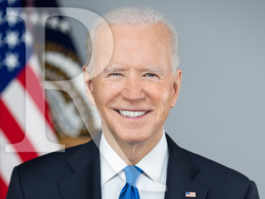Surprise! Cable Viewers Watch the Hosts They Trust
Trust drives viewership, or vice versa, according to the latest Rasmussen Reports national telephone and online survey.
When asked which cable news network they general watch, 36% of Likely U.S. Voters say Fox News. In second is CNN with 24% viewership, followed by MSNBC at 14%. Twelve percent (12%) say they generally watch some other network, while 14% say they do not watch any cable news. (To see survey question wording, click here.)
If we drill down to ask about specific on-air personalities, guess what? Viewers most trust the talking heads on their preferred channel.
Among Fox News viewers, newcomer Tucker Carlson leads the pack, being trusted most by 24%, followed by 18% each who put their faith in Sean Hannity and Bill O’Reilly. Interestingly, 14% of regular Fox News viewers trust MSNBC’s Rachel Maddow most, with other MSNBC and CNN on-air personalities in single digits.
Among regular CNN viewers, a sizable 44% trust Anderson Cooper the most, with just half as many (22%) voicing more confidence in Erin Burnett. Don Lemon is most trusted by nine percent (9%) of CNN watchers.
Among those who watch MSNBC regularly, Maddow is most trusted by 21%, but only 11% trust MSNBC’s Chris Matthews the most. MSNBC viewers trust CNN’s Cooper (19%) and Lemon (14%) and Fox News’ Hannity (13%) more than Matthews.
Add it all up including those who watch some other channel, and Cooper is most trusted by 17% of all cable viewers. Carlson and Hannity are next at 11%. Nine percent (9%) trust Maddow the most, followed by O’Reilly (8%), Burnett (7%), Lemon (5%) and Matthews (4%). Eight percent (8%) trust someone else the most, while one-in-five viewers (19%) are undecided.
(Want a free daily e-mail update? If it's in the news, it's in our polls). Rasmussen Reports updates are also available on Twitter or Facebook.
The national survey of 1,000 Likely Voters was conducted on February 16 and 19, 2017 by Rasmussen Reports. The margin of sampling error is +/- 3 percentage points with a 95% level of confidence. Field work for all Rasmussen Reports surveys is conducted by Pulse Opinion Research, LLC. See methodology.
Seventy-five percent (75%) of voters said in early January that they watch cable news networks at least occasionally for their political news in a typical week, including 25% who say they watch every day. Among those who tune in to cable news networks at least occasionally, 42% say Fox News is the channel they generally watch, compared to 35% who turn to CNN and 19% who prefer MSNBC. This hasn’t changed much since last summer.
Younger voters are equally likely to watch Fox News or CNN. Those 40 and over are more likely to turn to Fox.
Sixty-two percent (62%) of Republicans prefer Fox News. Among Democrats, it’s CNN (37%), MSNBC (23%) and Fox News (20%). Twenty-eight percent (28%) of voters not affiliated with either major party choose Fox News, followed by CNN (15%) and MSNBC (13%). Twenty-seven percent (27%) of unaffiliateds don’t watch any cable news, compared to just six percent (6%) of GOP voters and nine percent (9%) of Democrats.
Among voters who Strongly Approve of the job President Trump is doing, the most trusted on-air cable news personalities are all on Fox: Carlson (23%), O’Reilly (16%) and Hannity (13%).
CNN’s Cooper is by far the most trusted among those who Strongly Disapprove of the job the president is doing, with 24% support, but 25% of these voters are undecided on the question.
Critical of the press coverage he has been getting, Trump has called some in the media "enemies of the people." Most Republicans remain angry at the media and strongly support calling out specific members of the press by name, while Democrats and unaffiliated voters are far less critical of the media than they've been in the past.
Forty-four percent (44%) of all voters believe that most reporters are trying to block Trump from passing his agenda; just 10% believe they are trying to help him. By comparison, 48% believe most reporters were trying to help President Obama pass his agenda.
In early January, voters remained critical of the news coverage of Trump and said the media is still showing the same bias against him that it displayed during the presidential campaign.
Additional information from this survey and a full demographic breakdown are available to Platinum Members only.
Please sign up for the Rasmussen Reports daily e-mail update (it’s free) or follow us on Twitter or Facebook. Let us keep you up to date with the latest public opinion news.
The national survey of 1,000 Likely Voters was conducted on February 16 and 19, 2017 by Rasmussen Reports. The margin of sampling error is +/- 3 percentage points with a 95% level of confidence. Field work for all Rasmussen Reports surveys is conducted by Pulse Opinion Research, LLC. See methodology
Rasmussen Reports is a media company specializing in the collection, publication and distribution of public opinion information.
We conduct public opinion polls on a variety of topics to inform our audience on events in the news and other topics of interest. To ensure editorial control and independence, we pay for the polls ourselves and generate revenue through the sale of subscriptions, sponsorships, and advertising. Nightly polling on politics, business and lifestyle topics provides the content to update the Rasmussen Reports web site many times each day. If it's in the news, it's in our polls. Additionally, the data drives a daily update newsletter and various media outlets across the country.
Some information, including the Rasmussen Reports daily Presidential Tracking Poll and commentaries are available for free to the general public. Subscriptions are available for $4.95 a month or 34.95 a year that provide subscribers with exclusive access to more than 20 stories per week on upcoming elections, consumer confidence, and issues that affect us all. For those who are really into the numbers, Platinum Members can review demographic crosstabs and a full history of our data.
To learn more about our methodology, click here.




